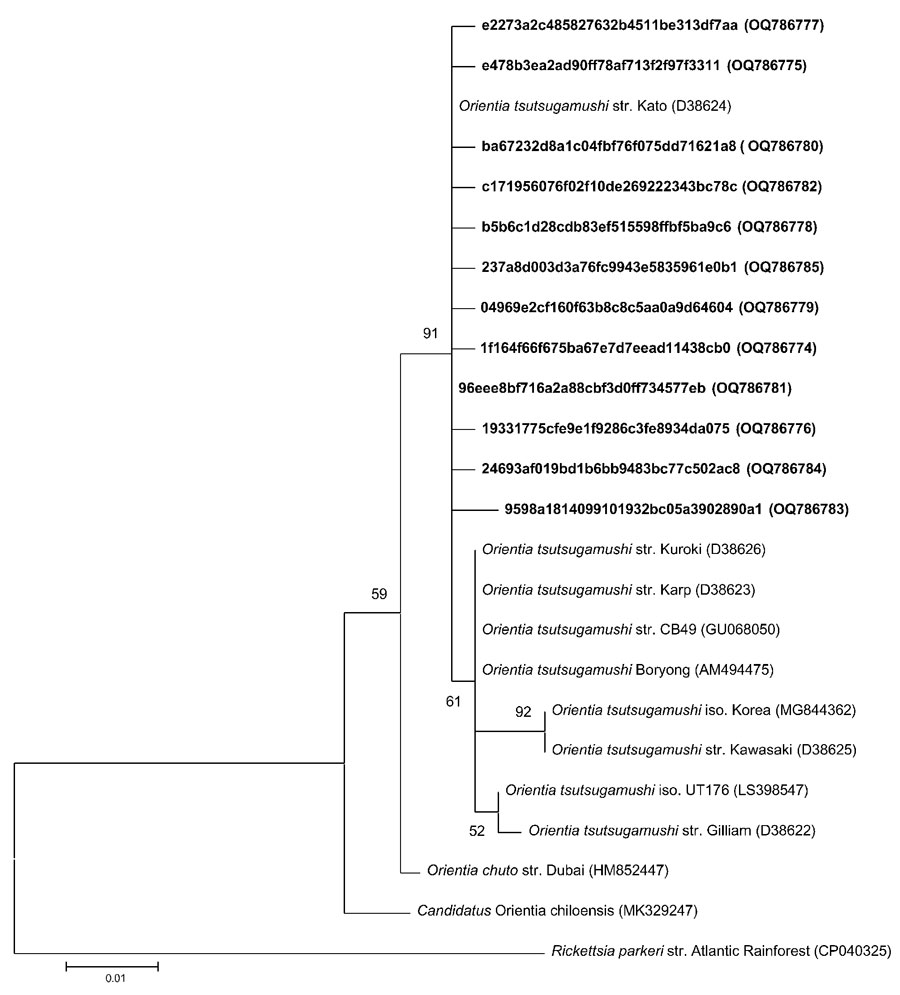Volume 29, Number 8—August 2023
Dispatch
Detection of Orientia spp. Bacteria in Field-Collected Free-Living Eutrombicula Chigger Mites, United States
Figure 2

Figure 2. Phylogenetic tree of Orientia tsutsugamushi 16S rRNA gene sequences (≈399 bp) from free-living chiggers collected in North Carolina, USA, and their reference sequences in GenBank. The tree was constructed using the maximum-likelihood method. Bold text indicates study sequences. Rickettsia parkeri was used as an outgroup. We conducted bootstrap analyses with 1,000 iterations evaluate the strength of the tree topologies. GenBank accession numbers are in parentheses. Scale bar represents 0.01 substitutions per nucleotide position.
Page created: June 29, 2023
Page updated: July 20, 2023
Page reviewed: July 20, 2023
The conclusions, findings, and opinions expressed by authors contributing to this journal do not necessarily reflect the official position of the U.S. Department of Health and Human Services, the Public Health Service, the Centers for Disease Control and Prevention, or the authors' affiliated institutions. Use of trade names is for identification only and does not imply endorsement by any of the groups named above.